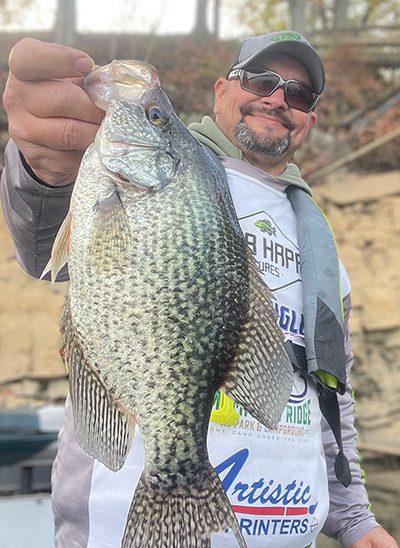
It is that time of year on the water when it is bitterly cold and the temperature barely gets out of the 40s. But despite a chilly boat ride to your favorite location on the lake the crappie bite can heat things up in a hurry. As the winter water temperatures get steady the crappie have moved, following the baitfish into shallower waters of the coves, points and flats on the lake. It’s a perfect time to take advantage of those schooling, suspended crappie.
I have said it before and I will repeat myself by saying the most common method used by the anglers on the lakes of Cherokee and Douglas, here in East Tennessee, is the hair jig (tipped with a minnow) and float method. One thing I need to mention also that if you are fishing these areas and the bite seems to shut down try downsizing your bait to a smaller profile bait and like my father told me time and time again “slow down on your presentation”.
While it’s no secret to anyone that the word gets around pretty quickly when and where crappie are being caught in certain areas here on Cherokee and Douglas lakes, if crowds annoy you, as they do me, there is a solution I have for that. Being an angler that prefers to feel that thump, I mainly continue using the tightline casting and vertical jigging methods on brush, laydowns, steep banks or rock piles—seems these dead winter slabs can be anywhere. For myself, if I am looking to have the best chance at a limit of fish, I will fish these areas in addition to the crowds. The advantage I have found by doing this is that I am more apt to catch a mixed bag of black and white crappie instead of just the white slabs, therefore increasing my chances of catching a limit of fish. This eliminates wasting too much time in a dead area.